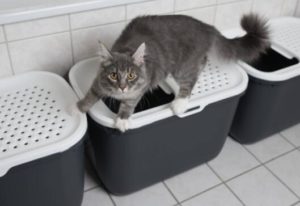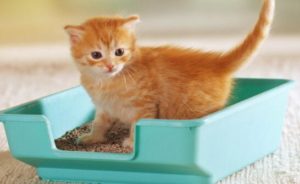 Did you know that on average, an outdoor cat will live for 5.6 years while an indoor cat, that is only partially allowed to step outdoors will live for an impressive 16.8 years? Its, therefore, no surprise that the majority of Americans and residents of other nations will prefer to live indoors with their cats, and purchase a litter box for dedication, which is a complex word for peeing and pooping.
Did you know that on average, an outdoor cat will live for 5.6 years while an indoor cat, that is only partially allowed to step outdoors will live for an impressive 16.8 years? Its, therefore, no surprise that the majority of Americans and residents of other nations will prefer to live indoors with their cats, and purchase a litter box for dedication, which is a complex word for peeing and pooping.
A litter box, usually called a litter tray or sandbox by some, is a small structure used by small pets, cats included to deposit feces and urine after being trained to do so There are various types of litter boxes, and your choice depends on the design complexity and of course your budget. Note that litter boxes may either be open or hooded. Here are the top 4 kinds of litter boxes:
Top 4 Kinds of Indoor Cat Litter Boxes Recommend
1. Open litter pans
They are the cheapest kind and could either be washable or disposable. They are rectangular in shape and slope outwards on the sides from 3.9 to 5.9 inches. They also have low walls, which means they are not ideal for animals that burrow or scratch. This type of litter box is quite cheap, but on the flip side, it requires high maintenance.
This is because the indoor litter box does not conceal the feces and urine, which could create a poor visual image to guests. It also does not trap odors which means when it’s not regularly emptied, it could make your premises stink. It is good to note that cats do prefer this kind of litter box since it allows maximum ventilation. If you wouldn’t mind taking out the liter immediately you cat messes, this one is for you.
2. Enclosed litter boxes.
They are usually covered with a hood or dome over the litter pan. Mostly, they are made of plastic and contain an opening in the hood. This is most often than not a swinging door on the front side. They reduce odors and reduce cat messes by enclosing the liter in the hood. These are also moderately priced and easy to maintain since they do not require constant scrutiny. To clean, simply lift the hood, scoop off the litter then wash the tray to keep off bacteria.
3. Top-entry litter boxes

They are a variation os the enclosed litter box. They usually have an opening at the top of the box enclosure, so the cat has to jump into a hole at the top to defecate. They keep the contents of the litter box away from children which is a great advantage. They also keep odors off and conceal messes efficiently. Their only limitation, however, is that an injured or physically impaired cat cannot use them.
4. Self-cleaning litter boxes
This is the most advanced type and is made up of an automated process that scoops the litter, flushes it, washes the tray, deodorizes the box to keep it fresh, and finally heats the box to keep it dry. It is just like a human being’s washroom, which is quite impressive. These boxes use electricity to automate the cleaning process which means that not only are they expensive to buy, they also need the power to run.
You know yourself best, as well as your cat. From these, choose the most suitable type for both of you!
